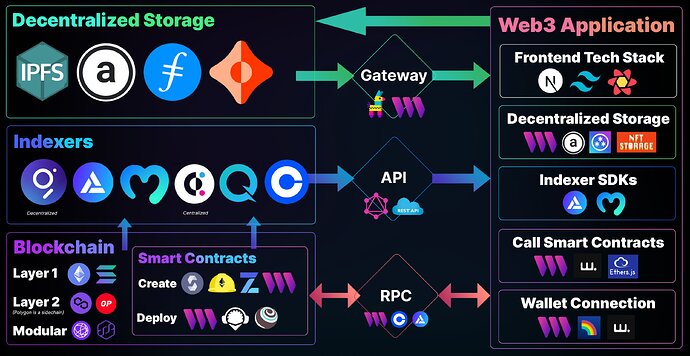A web3 application, also known as a decentralized application (DApp), is a type of application that is built on top of a decentralized, distributed ledger or blockchain. The architecture of a web3 application typically consists of the following components:
- Smart contracts: These are self-executing contracts with the terms of the agreement between the parties being directly written into lines of code. Smart contracts are stored on the blockchain and are triggered by events or transactions.
- Decentralized storage: This refers to the use of distributed storage systems, such as InterPlanetary File System (IPFS), to store data and other application assets in a decentralized manner.
- User interfaces: This can be a web-based interface or a mobile app that allows users to interact with the DApp and its smart contracts.
- Blockchain nodes: These are the nodes in the decentralized network that maintain a copy of the blockchain and participate in the consensus process to validate and record transactions.
- Serverless functions: These are small pieces of code that can be triggered by events and run in a fully managed environment without the need to provision or manage servers. Serverless functions can be used to provide additional functionality to a DApp, such as interacting with external APIs or sending notifications.
- External APIs: These are application programming interfaces (APIs) that allow the DApp to interact with external services or data sources.
- Identity management: This refers to the use of decentralized identity systems, such as decentralized identifier (DID) networks, to manage user identities and authentication within the DApp.
Did that answer your question? Do you have any additional questions about web3 applications or blockchain architecture?
